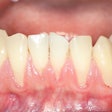Exposure to the heavy metals lead and cadmium appear to be significantly associated with a higher risk of developing periodontal disease, according to a systematic review published on June 6 in BMC Oral Health.
The results shine a light on the importance of decreasing environmental exposure to these heavy metals as part of preventive strategies for gum disease, the authors wrote.
“These findings suggest that environmental exposure to lead and cadmium may play a significant role in the pathogenesis of periodontitis, emphasizing the need to consider heavy metal exposure as a potential risk factor for periodontal disease,” wrote the authors, led by Yousheng Wu of the People’s Hospital of Beilun District in China.
Past research has shown that environmental factors, including exposure to heavy metals, can affect the development of periodontitis. Therefore, this review aimed to better understand the link between lead and cadmium exposure and gum disease, according to the study.
A search through February 2025 revealed 14 studies comprising 72,467 participants that were related to a possible association between gum disease and heavy metal exposure, according to the study.
The meta-analysis revealed that exposure to cadmium and lead was significantly associated with higher odds of developing periodontal disease, with pooled adjusted odds ratios (aORs) of 1.22 (95% confidence interval [CI], 1.08 to 1.37) and 1.85 (95% CI, 1.42 to 2.41), respectively. Additionally, the robustness of the results was confirmed from sensitivity analyses, the authors wrote.
Moreover, the study had multiple limitations, including that only minimal studies were available for review, they wrote.
In the future, longitudinal studies should be done to establish causality and explore mechanisms in the hopes of informing public health interventions to mitigate the oral health risks linked to the exposure of heavy metals, the authors wrote.
“The findings of this study demonstrate a significant association between exposure to lead and cadmium and periodontitis,” Wu and colleagues wrote.




















